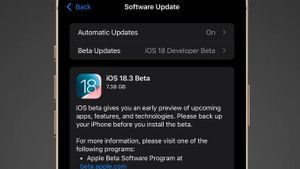JAKARTA - If you like taking pictures with a smartphone or digital camera, you must be familiar with a folder called "DCIM". But do you know what does "DCIM" mean?
Quite a few professional photographers don't know the meaning of this one folder. In short, DCIM stands for Digital Camera Image. This folder is the standard reference for all types of cameras in storing data from captured still images.
DSLR cameras, mirrorless cameras, point and shoot cameras, action cameras, even smartphone and cellphone cameras. This DCIM folder is created automatically when the camera does not find or the default setting for the photo storage folder that you specify.
This DCIM folder is one of the standard provisions of the DCF (Design rule for Camera File System) made by a technology institute from Japan. Namely, JEITA (Japan Electronics and Information Technologies Industries Association).
The purpose of making this DCF is to make all types of cameras can be mutually compatible in terms of storing photo data. Likewise, it makes it easier for the software to recognize stored photo files.
When browsing in a file explorer on a computer, the DCIM folder structure always begins with the file name, format, and metadata, followed by the subfolders stored in it. For example, 100EOS700D for photos taken from Canon cameras or 100MSDCF if using Sony devices.

File Format
Usually, the metadata of files is also arranged according to their format and type. Generally, image files will be labeled as JPG, JPEG, PNG, WEBP, GIF, and JFIF.
JPG = JPEG stands for Joint Picture Express Group or the name of the group with the DCT (discrete cosine transform) algorithm for the image file size. There is also the JFIF (JPEG File Interchange Format) format or extension, which is a standard image file format downloaded from the internet.
Then there are PNG or portable network graphics, WEBP (web pictures). GIF or graphics interchange format allows the arrangement of photo files to be converted into moving images with small resolution and short duration.
The English, Chinese, Japanese, Arabic, and French versions are automatically generated by the AI. So there may still be inaccuracies in translating, please always see Indonesian as our main language. (system supported by DigitalSiber.id)













